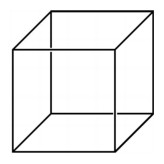Week 4 - Medicine & Art
After reviewing Professor Vesna’s lecture regarding medical
technologies and art, I agree that art and medicine cannot be separated. I was
most intrigued about the play of art in plastic surgery. I did not realize that
plastic surgery originated during the war.
A soldier who had facial reconstruction after facial injury.
As BBC states, facial injuries would
most likely occur due to shrapnel, causing the blast to rip a face off. It was
only due to Harold Gillies that plastic surgery was developed and began facial
reconstruction. Although initially, plastic surgery occurred to save lives, it
is now considered cosmetic surgery.
Features that could be improved through cosmetic surgery.
Coming from South Korea, where plastic
surgery is prevalent, I automatically connect plastic surgery to aesthetic
purposes. The general population in America associates cosmetic surgery to
raising the nose bone or breast implants; however, in Korea, cosmetic surgery
ranges from shaving your facial bone structure to inserting hyaluronic acid
droplets into the skin to create an anti-aging, clear skin. These surgeries are
prevalent in Korea to the extent that Korea has accepted cosmetic surgery as part
of path to coming of age. The surgery requires fine details to make symmetrical
features, double eyelids, high arching nose, full nose, etc. I consider the
precision required to achieve natural young beauty to be a form of art. Cosmetic
surgery is a method to curve art onto a human being.
Sources:
- Chang, and Victoria Thompson. “South Korea's Growing Obsession with Cosmetic Surgery.” ABC News, ABC News Network, 20 June 2014, abcnews.go.com/Lifestyle/south-koreas-growing-obsession-cosmetic-surgery/story?id=24123409.
- Hu, Elise. “In Seoul, A Plastic Surgery Capital, Residents Frown On Ads For Cosmetic Procedure.” NPR, NPR, 5 Feb. 2018, www.npr.org/sections/parallels/2018/02/05/581765974/in-seoul-a-plastic-surgery-capital-residents-frown-on-ads-for-cosmetic-procedure.
- Mosley, Michael. “How Do You Fix a Face That's Been Blown off by Shrapnel?” BBC IWonder, BBC, www.bbc.co.uk/guides/zxw42hv.
- “SkinLab MD™ Dew Drops.” Cosmetic Dermatology Manhattan Beach | Dr Annie Chiu Redondo Beach, www.thederminstitute.com/products/skinlab-dew-drops/.
- Vesna, Victoria. “Medicine and Art: Parts 1-3.” YouTube. YouTube, n.d. Web. 25 Oct. 2012. http://www.youtube.com/watch?feature=player_embedded.
Image Sources:
- Aidin, Beatrice. “10 Facial Cosmetic Surgery Trends.” Raconteur, Raconteur Media Ltd., 18 Oct. 2016, www.raconteur.net/lifestyle/top-10-cosmetic-facial-treatments.
- Branca, Antonio. “History of Plastic Surgery.” NHS Choices, NHS, www.royalfree.nhs.uk/services/services-a-z/plastic-surgery/facial-reconstruction-and-face-transplants/history-of-plastic-surgery/.
- Innes, Emma. “Plastic Surgery in South Korea Is Now so Good That People Travelling Home Afterwards Need CERTIFICATES to Prove Who They Are.” Daily Mail Online, Associated Newspapers, 9 June 2016, www.dailymail.co.uk/health/article-2610231/Plastic-surgery-South-Korea-good-people-travelling-home-surgery-need-CERTIFICATES-prove-are.html.






Comments
Post a Comment